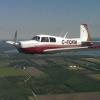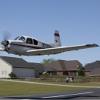Leaderboard
Popular Content
Showing content with the highest reputation on 09/28/2017 in all areas
-
She's flying great. Today was the first day where it actually felt like fall. No clouds after 5pm, sky smooth as silk. I shot down to my CFIs house for a chat about getting back into the IFR training regime, then popped on over to my mechanic's place (beautiful 2300' grass strip) for some hangar flying. It wasn't long before my girlfriend was ready to get back and eat4 points
-
EI would only allow my monitor to be redlined at 27.2 gph per the STC. I have my FF set at 29.6 gph on sea level take off per the smart minds at APS which my blinking engine monitor lets me know. It bugs me but I always look at it so it might be a good thing. 27.2 gph will give you maximum performance as well as maximum CHT's on take off. Summer time out here it is too hard on the cylinders and I trade some power on the climbs for cool cylinders.2 points
-
I did too, and I won't try it again. I was trying to run the tank empty so I could measure the actual amount of fuel it holds. I figured I'd just switch over at the first sign of any hesitation. I was running at low power, and I had difficulty telling when the engine actually quit until I noticed I was descending. It must have been 10-15 seconds after the engine was actually out, but with the prop windmilling there was very little change in sound. I switched over to the other tank and turned the boost pump on, and the engine coughed, stumbled and hesitated for what seemed like forever (but was probably only 5-10 seconds). And yes, I needed a clean pair of shorts afterwards2 points
-
Hello Mark I had the same problem with my 1986 252. It would blow a lot of oil all over the tarmac and right gear door upon startup. I thought that the turbocharger was the culprit. I called Don Maxwell and he told me that he sees this all the time and that people replace the turbocharger but the actual problem is the check valves. There are two of them and they have to be installed properly. If I recall correctly, The word "hinge" is inscribed on each valve and it needs to be on the top of the valve. Anyway, I had my local mechanic check mine. He took them off, cleaned them and put them back properly. Problem solved Hope this helps. Steve Stansel 1986 252TSE N252VA Sent from my iPhone using Tapatalk2 points
-
Is the residue in exhaust pipe oily and dark? One thing that can be ruled out easily with a borescope is the condition of the intake valve seals. The intake valve stems should be dry of oil unless you have bad intake valve seals. Leaking seals will allow oil from rocker area to be sucked into cylinder. Easy fix if it’s intake valve seals.2 points
-
Never thought of that. I have plenty of that at the shop. This is why this site is so great.[emoji4] Sent from my E6810 using Tapatalk2 points
-
There have been a few submerged Mooneys over the years. It isn’t hard to track the owners and ask if they are having issues due to the submersion. Fresh water: Salt water: Just fat in the water:2 points
-
My experience(s) have been more flukey than others. First, a partial blockage of airflow into the carburetor of our Grumman Cheetah as we were climbing through about 300 ft on departure, caused a rough running engine and partial power loss. Carb heat (what you are trained to do) further enriched the mixture, worsening the situation. The only possible solution from the cockpit would have been to lean the mixture, adjusting the fuel air ratio for best performance, the one thing we are not trained to do in this situation. Our solution was to fly a tight pattern at about 400 ft...to a safe landing. Next, a plugged fuel vent in the Cheetah, caused by some tiny bugs deciding to build a nest in the right tank vent, caused a total power loss at altitude after switching from the left tank to the right tank. This was resolved by switching tanks, boost pump on and a return to the airport for a visit to the FBO's maintenance hangar. Finally, another rough engine / partial power loss event occurred while climbing through about 200 ft of altitude on departure. Carb heat, once again, exasperated the condition. Fortunately there was a cross Runway at KISM Kissimmee Airport and no other traffic because the engine quit all together just as the nose wheel settled on the runway. The mechanic on duty found that the engine was flooded due to a small piece of fuel tank sealant that somehow managed to get through the two sumps on the right wing (we were on the right wing tank at the time) and the fuel strainers to lodge where the float valve would normally seat in the carburetor. This resulted in another "too rich" condition followed by our second forced landing in the Cheetah. Speculation is that the earlier plugged fuel vent, engine quitting event caused some flexing of the integral right wing tank which later resulted in this piece of fuel sealant breaking free. It was about the size of a small booger. This same tank later developed a leak which resulted in the wing being de-mated from the plane for repair. My opinion is that you cannot predict when it will happen IF it ever happens to you.It does not happen to the vast majority of pilots. I would suggest that you should consider it a possibility every time you strap yourself into an airplane and be prepared to act when the problem occurs. You need to KNOW that if you lose power on takeoff that you MUST come forward on the controls to maintain airspeed and control of the airplane. You should also have a pre-planned place to go at your home airport if you have to deal with this problem. Figure out your options while you're sitting on your living room sofa. Don't wait until you have a problem in the airplane to try to figure out what to do. One last thought for you is this. When you take someone flying with you, you may be their spouse, their Dad, their friend or their relative but there is only one thing that you absolutely must be...and that is THE PILOT. That must be foremost on your mind. The lives of your loved ones depend on it. I sincerely hope that you never have a power loss experience in your flying career. P.S. You might think that after having two forced landings and the power loss at altitude that I would probably not miss the Cheetah. Well, believe it or not, I absolutely loved flying that airplane and miss it to this day. We sold it twenty seven years ago...almost to the very day. That was one nice flying airplane.2 points
-
I was the pilot. My passenger was a 2016 graduate of the same university/fraternity. If I’d had a chute I would have pulled it (we were ~1800’ AGL descending into KBUR when we lost the engine). My primary concern was my passenger and those on the ground. I looked for the darkest side street I could find (10pm in Glendale on a Friday night, the major roads were clogged with traffic). I just flew her until I couldn’t. In maneuvering to avoid an apartment building I (think I) stall/spinned her into a tree. That Mooney fuselage protected us very well. She wasn’t perfect, but she was solid. I’ve had her 4 months and flown her 65 hours (she was down for ~10 weeks getting avionics work done, which I knew when I bought her would be required), everything from pattern practice at Chino to 12K IFR trips to Utah and Arizona. Two A&Ps have worked on her. I’ll advise when I know more about what happened last night. All I do know is, as far as I know I kept in control of the plane as much as possible, and whatever skill I have as a pilot was heavily augmented by luck (no damage to property on the ground, no injuries). Now I’m sore, stiff, exhausted, and bowing out for at least a little while. I do believe I’ll have another Mooney someday though.2 points
-
I just got an update email from TruTrak giving the status of the STC process for various aircraft. It seems they have completed or almost completed the paperwork for the Cessna singles and the PA-28, and are at a point where they will decide where to go next. The email specifically mentions Mooney (!!) and Bonanza, and the decision will be based on the level of interest. If you haven't done so already, please go to their website https://trutrakflightsystems.com and click on the STC survey box at the top of the page to let them know if you are interested in an STC for Mooney aircraft. Thanks!1 point
-
Cost me a little more than I wanted, but not much more than I expected. Repaired/replaced items: Nose wheel was internally corroded pretty severely. Shop was actually very surprised. It looked perfect on the outside, but when they tried to separate the wheel halves, the bolts had to be driven out with a hammer. Said it was really ugly in there. Replaced with a used nose wheel. Aileron control rod in the belly was slightly bent and rubbing on the structure. Control rod replaced. N201MKturbo commented that the controls felt a little heavy when he flew it. Wonder if this is why. Replaced main landing gear shock disks. They were last replaced in 1988. Well past due. Left landing gear bungee spring was nearly worn through. Replaced. Replaced a couple probes on the UBG-16 Shimmed lower engine mounts - spinner was very close to contacting cowling. Left brake master cylinder leaking. Resealed. Landing gear warning horn INOP. Replaced horn. The only 'surprise' items were the control rod and nose wheel. The pre-buy noted everything else. Overall, the shop noted that the plane is in very good condition with no other items of concern noted. Ready to get her back!1 point
-
This weeks layovers included VPS and ECP. Weather is excellent down here. Ocean is warm. Waves are almost nonexistent. Landed the mighty Maddog late last night and already saw a few Mooneys parked at the FBO. Mine should finally be done with her month long annual on Sunday. Too late to enjoy this years festivities. New cylinder, new lndg gear 40/1 gears, gear motor redone, new shock discs, Gami injectors, headrests and a few other items. Enjoy some beautiful flying and beach time!!1 point
-
Well, found the leak and it wasn't hard. Looks to me like the tube is pulled away (...a looong way) from the seat. How did it get that way and how to fix?1 point
-
I may have sent pictures, a link to the LA Times article, and a note of thanks, to the Mooney factory. I hadn't seen the aerial footage until today; it looked a lot less "bent" on the ground. But from any perspective, that fuselage was intact, and so are we.1 point
-
TCM's spec for metered max fuel flow for the 310 HP IO-550 in the -N configuration is 25.6 - 27.3 GPH (just as @M20S Driver and @StevenL757 pointed out above) and we at Savvy like to 0.5 to 1.0 GPH above the high number yielding a target max FF of 27.8 to 28.3 GPH for exactly the reasons @kmyfm20s cited above, and essentially exactly where @Jeff_S is at. (knowing the kind of summertime flying @kmyfm20s does out of the desert, I can understand exactly why he's pushing his to 2 GPH above). But one gallon above isn't going to rob an appreciable amount of power but it will sure help keep the engine running cooler till you are ready to lean further. We'd really like to see the 310 Ovations in the low 28's GPH. Apparently JPI is trying to stick to the middle of the range which makes no sense.1 point
-
In the J model at least, you can descend at cruise power at about 200 mph and make a very positive impact on your block trip time. In the M20E around 23 inches will do the same thing while keeping out of the red. Also what were your fuel tank levels when this happened?1 point
-
Correct. 27.3 with full throttle and 2700RPM is what the STC states for the IO550N. Bob Minnis (its author) will recommend as much as 30; given the small intake openings on the Ovation, and the efforts to keep CHTs low during takeoff. Although others will report setting less, you shouldn't be going much lower than 27.3 in keeping with best-practices / optimal engine management on the Ovation (and 310 Eagle) platforms. Steve1 point
-
When I have done it I keep an eye on the fuel pressure when I am getting to the time I expect it to run dry. When the pressure slowly starts dropping, I reach down and switch the tank. Engine doesn't even stumble, passengers have no idea the tank ran dry.1 point
-
A real Mooney pilot, yes. But I, for one, never knew or cared about the price of 100LL at the airports. I don't fly enough for it to be a concern. Availability is a problem and I landed at places where they had no self-servie pump on a Sunday.1 point
-
1 point
-
Oh, man! I'll be there in the morning . . . have a cold one for me this afternoon! Lord knows I need one this week . . . .1 point
-
The STC for screaming Eagle (latest one purchased from Mooney) specifies the fuel set up to be the same as io550N and the range is 25.6 - 27.3 GPH.1 point
-
1 point
-
Especially on the belly! Uggg. Sent from my XT1585 using Tapatalk1 point
-
I suggest that you read this article: https://www.avweb.com/news/pelican/182179-1.html and others by Deakins. He dispels a lot of OWT's (old wives tales) about engines. The bottom line is that there is no good reason to reduce MP or rpms until reaching your cruising altitude. But if you want to reduce your rpms at full throttle, go ahead. You're just reducing power by other means. You will not damage your engine.1 point
-
I go WOT / 2700 while sitting on the numbers, and leave it there until I level off and the plane accelerates to a steady airspeed. Then I set my desired power, lean and accelerate some more. When I remember, I use the Target EGT method to lean during the climb. 25 / 25 actually reduces your climb rate, and the reduced airflow over the engine increases all engine temps for the duration of the longer climb . . . You may want to rethink that method. Visit the MAPA site (www.mooneypilots.com) and read the articles written by Bob Kromer about how to climb, cruise and descend in your Mooney. He started as a test pilot, and moved up through VP of Engineering, so he knows wherefrom he speaks / writes.1 point
-
Get a $5 piece of Lexan or Acrylic from HomeDepot and mock it up with that. You can see through it and it's easy to mark with a sharpie. When it's right, use the free version of SolidWorks from EAA to create your own CAD file. Send it to your local metal shop to get a panel cut... You said you had time on your hands ;-) See you in Panama City.1 point
-
Ok I didn't know there was one. Awesome thank you. Sent from my E6810 using Tapatalk1 point
-
My 67C starts every time with 3 pumps of the throttle if cold and two if hot. Fuel pump on, wait for pressure to stabilize then pump throttle 3 times and turn fuel pump off. Turn key and she fires within 2 blades every time. Sent from my iPad using Tapatalk1 point
-
Reviving: FYI - the Aveo engineering group is attending and looking to give a pair of their new wingtips for a Mooney with the slab wingtips. They need a donor aircraft for final certification. Free $2500 tips if you guys know if anyone who wants wingtips. Embedded LED nav and stobe lights PM me and I'll put you in touch with them:1 point
-
This is my idea of a multi-engine airplane that I could handle an engine out (or two) in:1 point
-
I've run a tank dry a few times, but that is at 9,500' or 10,500'. I think I would need a clean pair of shorts if it happened in the pattern...1 point
-
Some years ago without warning, I suffered a sudden and total engine failure in my J whilst in cruise after about 10 minutes of flying. Glided into a paddock wheels up and survived with no injuries. Engine later ran fine when bolted onto the test mechanism. Fuel injection system was disassembled and thoroughly examined with no issues. Aircraft had approximately 160 litres of fuel remaining with no evidence of contamination. The power just very suddenly stopped as evident by the JPI data, which did not reveal any other issue. WTF? Due to the suddenness of failure, an electrical issue was strongly suspected. The only smoking gun was a broken P lead and much carbon inside the starter ignition switch with obvious evidence of arcing, probably for a lengthy period of time. The switch was original and changed out for the latest, which does not present this problem. Unbeknown to me or my engineer at the time, we later discovered this older switch was the subject of previous documentation issued by the New Zealand CAA (there was also another country authority, but I can’t recall the one) for this type of switch to be examined every 500 hours or replaced with the latest type switch. To my knowledge neither the FAA or even Mooney had actioned any documentation relating to this issue. No one can be 100% certain the switch was totally to blame, but the P lead and ignition switch was the only evidence relating to the failure. Despite less than 100% certainty, I implore all members who still have the old style ignition switch to PLEASE have it changed out. The later style switch is the same as in the Acclaim and Ovations. I don’t know if the early Ovations have the same. The later style key has the name ‘Medico’ on it and can only be acquired through Mooney. Mlm20c - Flying is risky business. I do it for a living and love flying my Mooney even more. We can only mitigate the risks as best we can. One of my mitigation’s is to avoid night flying as much as possible. Victor1 point
-
What’s a wrench? I know a number of owners who are basically helpless when it comes to doing even the slightest bit of work on their plane. I think of this in terms of the zombie apocalypse — they will be the first eaten. For the first 7 years of ownership I did owner assisted annuals. It really helped me to understand the systems and to know when to ask for help.1 point
-
I can't imagine investing the kind of money we do in engines, and running them without an engine monitor. I'm not nearly experienced enough, nor wealthy enough to think about running without one. It was the first money I spent on my M20C which didn't have one. And upgrading from an EDM700 to EDM900 was the first money I spent on my 252. @Bartman example here is just another reason for having one. After the C I decided any Mooney I was thinking of purchasing would be marked down if the previous owner flew it without an engine monitor. #dontflywithoutit1 point
-
When I was working on my PPL in a C150, I had the CFI turn off the fuel valve, while I wasn't looking, to simulate an engine out. We were nowhere near the airport. I restarted the engine, flew back to KIAG, and fired the instructor.1 point
-
"Ask not what your country can do for you...." How society's perspective is changing. We are no longer in God's hands, but beholden to the government for all things.1 point
-
It was running, then it wasn't. Immediately switched tanks and hit the boost pump. Nothing. Went through the restart checklist ("retard throttle"). Nothing. Got on the radio and declared. (Not sure of the timing of all of this, it was all pretty sudden.) Cockpit was loud and we were still showing 1500rpm or so (which I now recognize was almost certainly just windmilling) and still had fuel pressure indicated. My first radio call was that I thought we'd lost an engine. But it soon became apparent we had no power. We were pitched for best glide (105) - I should have pulled the prop back, but even if I had, at ~1800' AGL and >5 miles out, we weren't going to make the airport. I probably spent a minute still intending to try to glide to BUR and trying to restart. I had long ago transcribed all the checklists into ForeFlight (and had a scan of the owner's manual in there too as a PDF), which saved invaluable time, SA, and stress vs digging those materials out in the dark, fumbling with a flashlight and finding the right pages, etc., and the ForeFlight amoeba finally told me what I had to accept: We could not glide to the airport. We were going down on a street.1 point
-
A friend and I flew to Paso Robles yesterday in his Cirrus; he flew up, I handled Comms and pointed out he was flying a pattern for the wrong runway (calm winds; runway 19, which we'd been announcing on CTAF). After lunch he cajoled me into taking the left seat for the return trip. (I know him well - we've flown that SR22 together many times and knew he was comfortable flying/landing from the right seat if necessary, and not bashful about taking the controls if need be (he jumped into one of my earliest landings in that plane, when I was still a fresh PPL, early last year). He was my ferry companion when I brought the Mooney home from Asheville.) I took off, kept a higher altitude than I would have before (9,500'), was particularly in tune with the engine (that SR22, a G2, has analog engine gauges in addition to the MFD engine monitor display page and thumbnail data on the maps page). We were on with LA Center and then TRACONs for the entire flight. Hand-flew to cruise, let autopilot handle the magenta line, then hand-flew into a pretty good moderate crosswind landing. I've been advised not to let it go even a week - too easy to let 1 become 2 become an indefinite number, and suddenly you're a rusty pilot whose last trip up ended in a crash... I had the same thoughts re the Cirrus chute. Loss of directional control and a ~3500# mass now dropping towards ... an apartment building? A gridlocked street or freeway? It wasn't an option that night so I can't say what I would have done in that moment; I had a glider and a radio and a rapidly shrinking "amoeba" in ForeFlight...1 point
-
Damn, I can't imagine trying to put it down in a place like Burbank. Well done Chrixxer. And the Mooney roll cage saves another two. I'll take it over a parachute any day!1 point
-
Same LEDS, I did not sync them, I personally like the apparent randomness (like a Christmas tree).1 point
-
I forget the exact number (or numbers), but somewhere around 14 inch MP, the prop starts pushing the engine. Bob was/is a fine pilot and has a lot of good information. I don't necessarily agree with all his conclusions, but his facts are great. Ie. I fully believe the part about the prop driving the engine, but I am not sure that is necessarily that bad.1 point
-
Does anyone else find all the mystique about "how to land a Mooney", a little silly? The Mooney is not a peculiar airplane in any way. It flies very nicely, exhibits no mean characteristics and lands (and flies) pretty much like any other certificated general aviation tricycle gear airplane. Or am I oblivious to its treachery?1 point
-
The author "tries" on this article. Some of it is decent, but in general he misses the point on how to land a Mooney correctly EVERY TIME. Yes, I teach using low RPM to avoid using less MP than 15" on descent. Although "Shock Cooling" is a myth per the Advanced Pilot Course, you still want the engine to run the prop and not the other way around. RPM is just as good a way of reducing power as reducing MP. Remember the "Key Numbers" discussion? 3 of any combination or inches of MP or 100s of RPM gives approximately a 10% reduction in power. So a 300 RPM reduction will reduce power to the same extent as a 3" MP reduction.1 point
-
As a doc who enjoys maintaining my aircraft, there are a lot of parallels between mechanics and doctors. I typically have the same mindset and level of focus when I'm doing say - an oil change - as I have when I'm say - doing a procedure for a child. Each done incorrectly or carelessly has a set of dire consequences. We've seen the MIFs outlined in previous threads. I'm happy to pay a fair price for competent work and more for excellent work. But you don't need to go to the "Mayo Clinic" of A&Ps to find a good mechanic. There are also $hit mechanics in huge fancy shops (or apprentices - kind of like the meds students of the mechnaic world). My latest mx mantra after being @&:$'d by a couple of big places in my short time as an aircraft owner. Find an independent, local A&P who you trust and develop a relationship with them. Treat them fairly and pay them for what they do and it will pay dividends in the long run.1 point
-
A retired proctologist decided he wanted to be a mechanic, after a few years of classes it was time for the final exam. The exam was straight forward, disassemble an engine, reassemble and it had run. After the instructor handed him his grade, he questioned how he scored so high, the instructor said 25 points for disassembly, 25 for assembly, 50 cause it started and ran, I gave you an additional 50 points for doing it all through the exhaust pipe1 point
-
The cost for aviation parts is way over priced due to product liability and certification costs which leaves little room for profit. OEM automotive and motorcycle parts have a 100% markup over dealer cost and there is generally a matrix added to that, aftermarket items have a 30~40% markup, your local A&P is lucky if he can average a 10% discount from retail. When I had my Motorcycle shop the labor rate was $60.00hr and my A&P was at $45.00hr (he's now at 60). I honestly don't see how an independent A&P\IA can afford to have a large inventory of parts on hand, I know I wouldn't if I was one. I assume a seasoned A&P has around $40k wrapped up in hand tools and at least that in specialized shop equipment so don't complain to loud, he has a lot invested in education, money and time keeping you from falling out of the sky. Short story, I had a Doctor bring in his 3-wheeler in for tires back in the early 80's, I told him lets go up front and check prices so I could give him a heads up on the work requested, he said he didnt need an estimate and to call him when it was ready, back then you could only get the tires from a dealer, roughly $100.00 bucks a pop, so 3 tires plus labor & tax was pushing $400.00 on a 3-wheel that sold for grand when it was brand new. When the Doc came in to pick it up I slid the repair order across the counter as I gave him the total verbally, he stumbled and stuttered and said I'm a doctor and don't make that kind of money, which I replied neither did I when I was a doctor, will that be cash, check or credit card...1 point
-
My start procedure is different: I leave the electrical pump on while pumping manually the throttle then turn it off then start. Yves1 point
-
Congratulations! Nice looking plane. I had covers on my C made by Bruce, and they were great. Never a problem, and kept everything nice and clean and cool!1 point
-
I stand corrected. looks like you are correct. I should have checked first.1 point




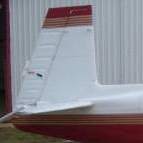
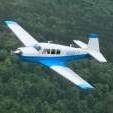

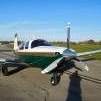

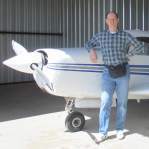






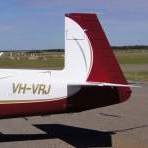


.thumb.png.7c67574d7b28f67b0b4a17760919b1ac.png)

